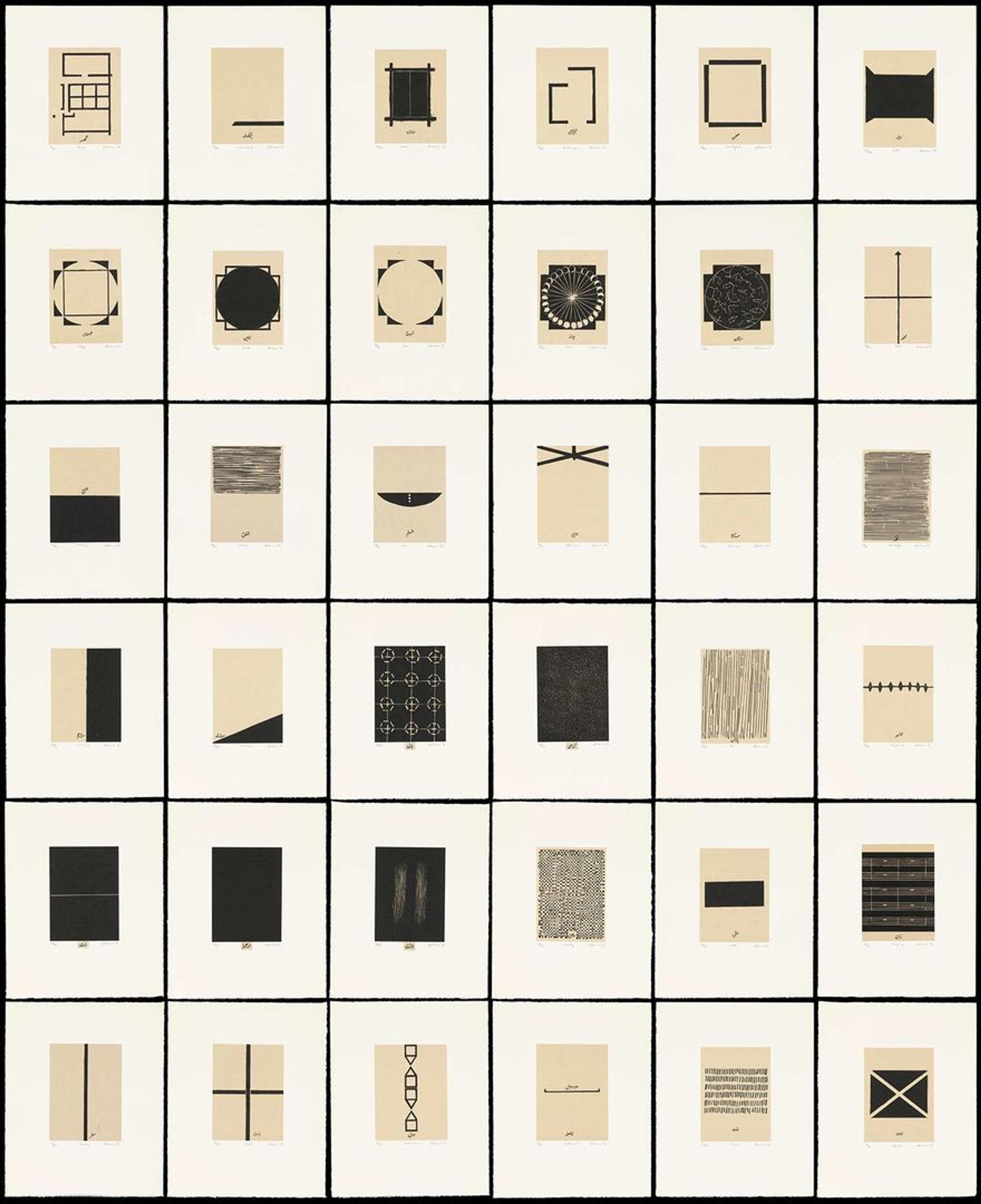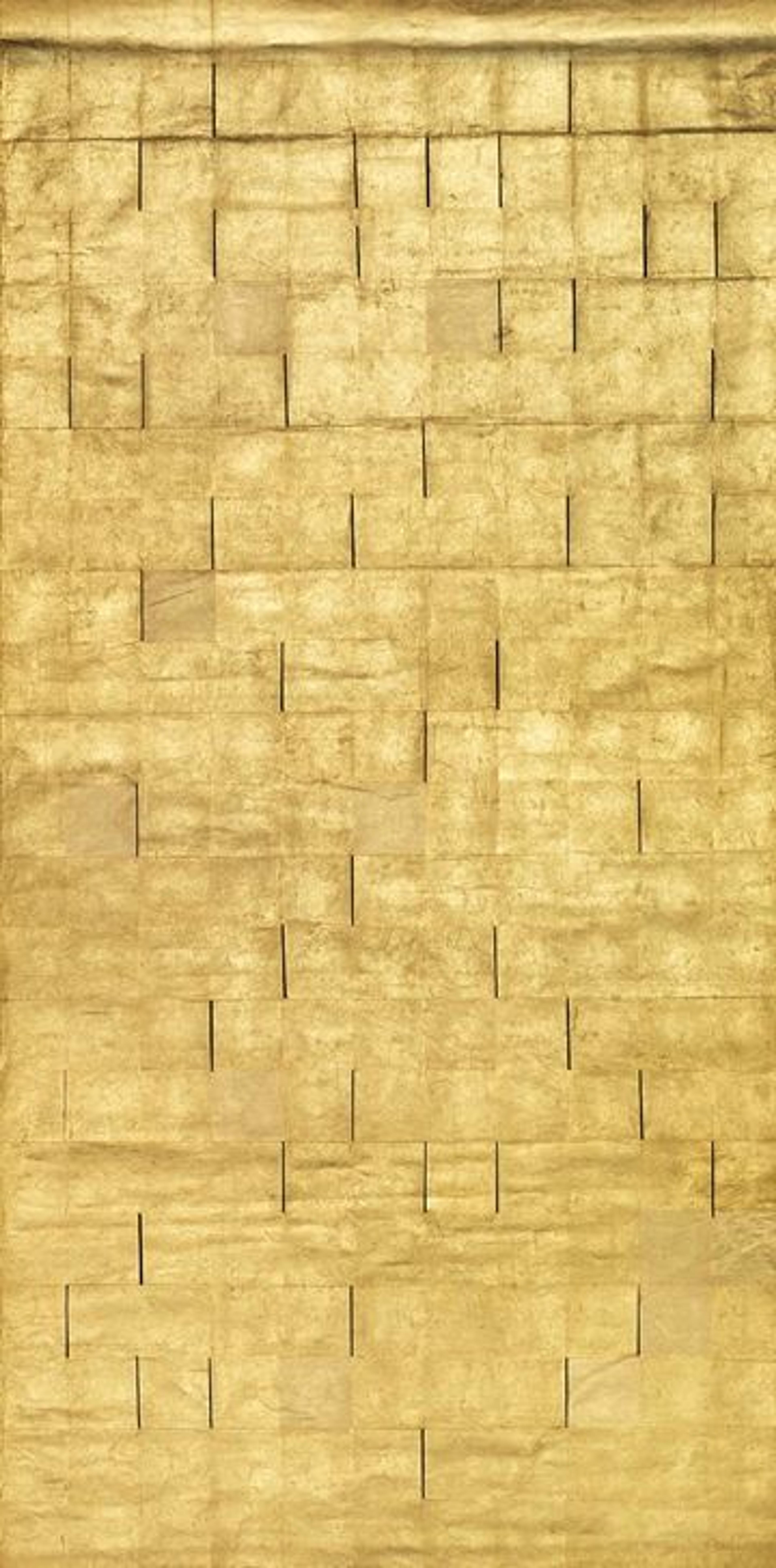Today we mark the loss of one of India's great cultural figures, Zarina Hashmi (1937–2020), who passed away on April 25th. Zarina was an outstanding artist, with an extraordinary life story. For many of her formative years, she was immensely peripatetic, living in all four corners of the globe. After her family home was ravaged due to the 1947 partition of India, imposed by the British to divide the country into two independent states, India and Pakistan, various family members were subsequently displaced to both sides of the divide. Later, Zarina left the Indian subcontinent to travel internationally with her diplomat husband, setting down for a couple of years in one city, then moving onto another. It was only when she was in her forties that she finally grew tentative roots in New York, though she never lost her sense of being an exile.

Zarina Hashmi (American, born India, 1937–2020), Home is a Foreign Place, 1999. Portfolio of 36 woodcut chine collé with Urdu text printed on paper and mounted on paper. The Metropolitan Museum of Art, Purchase, The George Economou Collection Gift, 2013 (2013.565a–nn)
Primarily working in intaglio, woodblock, lithography, and silkscreen on handmade paper, Zarina made exquisite graphic images pared down to simple, clear delineations, often complemented by Urdu inscriptions, exploring ideas of home, place, borders, and memory. These not only emphasize the essential nature of line in the language of both word and image—its ability in Zarina's work to trace the contours and borderlines of place and memory—but also to invoke her mother tongue, which denotes a lifelong 'translation' of artistic and linguistic expression. "Somewhere along the line I decided to make my own life the subject of my work, but I didn't realize how people would respond to that. Some people who have come and settled in the United States don't look back, but I'm not one of them. They are lucky!"
While her artistic practice is inflected by her lived experience, Zarina's work is refreshingly free from narcissism. In her seminal suite of 36 woodcut prints, entitled Home is a Foreign Place, 1999, Zarina works as cartographer of memory. Each print delineates something from memory, such as a perfect, simple pictograph of a ceiling fan in a vast room; it is a form that is universal yet also the essence of a personal experience. It also acts as a reminder of the geo-political specificity of a cultural heritage and identity. Describing the response to one of her exhibitions, she said "I have had people come to my show and start to cry. I always ask them why, and usually they say 'that is our story also.' A lot of them were people who were exiles from their own country: Holocaust survivors, or people who had the desire to return home. I realize that if you tell your story and if someone can come and cry on your shoulder, I think that is sharing."
With a degree in mathematics, Zarina found a different vocation in Paris where she studied inataglio with the renowned English painter and printmaker Stanley William Hayter from, 1963–67, subsequently learning woodblock printing at the Toshi Yoshida Studio in Tokyo, on a Japan Foundation Fellowship (1974). Once asked who her historic mentors were, she mentioned two names, the first being Dürer, who she discovered when she lived in Germany. "I went to Nuremberg for the 500th anniversary of Dürer's birth [in 1971], and I bought a couple of prints, including Knight, Death, and the Devil." The other was Rembrandt whose work she studied in The Morgan Library.

Albrecht Dürer (German, 1471–1528), Knight, Death, and the Devil, 1513. Engraving, Sheet: 10 x 7 6/8 in. (25 x 19.6 cm), Plate: 9 5/8 x 7 3/8 in. (24.3 x 18.8 cm). The Metropolitan Museum of Art, Harris Brisbane Dick Fund, 1943 (43.106.2)
Zarina was a remarkable human being. Ever focused on her art, she lived frugally, even ascetically, in a tiny Manhattan apartment; when a light bulb went out, she was known to neglect replacing it, relying sometimes on a candle's softer illumination.
Over copious lashings of first-flush Darjeeling tea and English biscuits, Zarina was intellectually generous and very well read; a conversation with her would range from deep knowledge of current American politics to poetry to a reminiscence of meeting Agnes Martin. She had a quiet wisdom born of a life in perceptive observation of humankind all over the world, and a fierce wit, sassy irreverence and hilarious sense of humor that turned any teatime into a party. Above all, her sense of what 'home' meant lay within her, in a deep belief in a spiritual life, that enabled her not just to come to terms with her permanent displacement, but also to serve as a trenchant, brilliant witness to our times.

Zarina Hashmi (American, born India, 1937–2020), Blinding Light, 2010. Gold leaf on Japanese paper, 72 x 36 1/2 in. (185.4 x 92.7 cm). The Metropolitan Museum of Art, Purchase, Bequest of Gioconda King, by exchange, 2014 (2014.495)